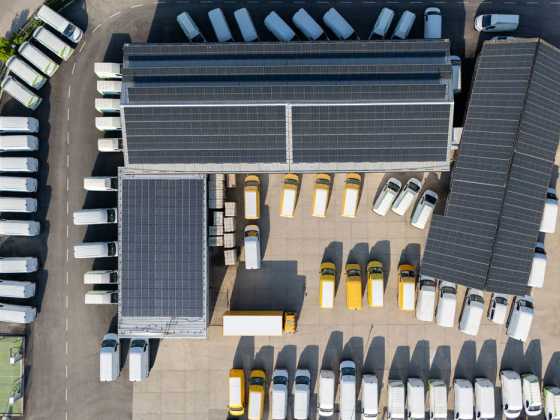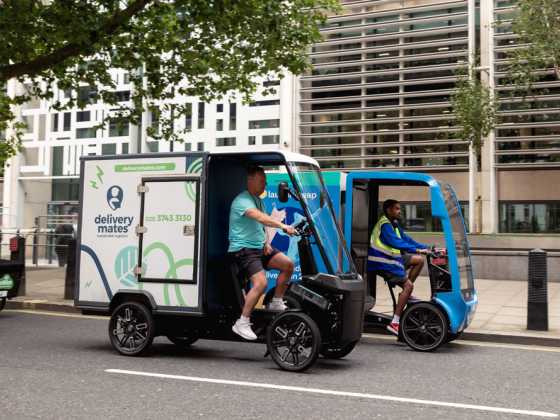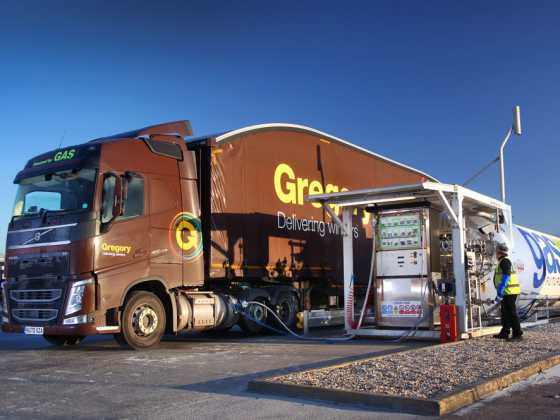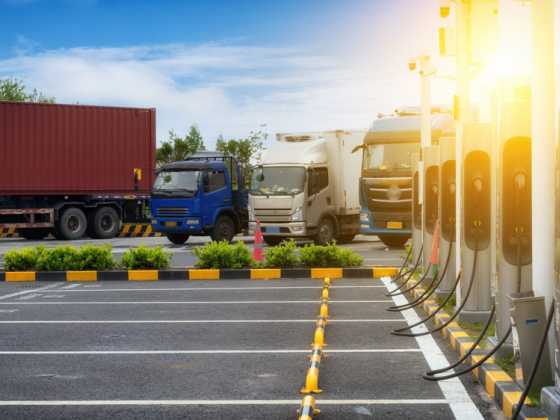Getting familiar with electric vehicle tyres

The tyres on electric vehicles are specifically designed for use on such vehicles and can be significantly different to normal tyres. Charity TyreSafe explains what EV owners should be aware of when choosing new tyres
TyreSafe is warning drivers that fitting the wrong type of tyre on an electric vehicles could result in loss of range, extra noise, accelerated wear and the risk of failing while being driven, which could result in a serious incident.
TyreSafe has released detailed advice for EV owners at tyresafe.org and advises drivers to familiarise themselves with the technology.
There are a wide range of factors which are important to choosing the right tyre, which the vehicle manufacturer has already taken into account when fitting the originals at the factory. The vehicle’s weight is just one as it influences the amount of air pressure required to keep a tyre in its optimal shape along with the stiffness of its sidewall and even its centre section. EVs are well-known for being heavier than their petrol or diesel equivalents, so an owner must be aware of their tyre’s load rating when a replacement is needed as well as maintaining the recommended tyre pressure at all times. Another consideration is the impact tyre choice can have on an EV’s range, due to its ‘rolling resistance’, as well what effect it has on noise.
Stuart Jackson, TyreSafe’s Chair, said: “Tyres are an extremely sophisticated piece of technology, which we all too commonly take for granted. However, drivers of electric vehicles must be aware of how different they could be to those on other cars, and when it’s time to replace the original tyres, owners need to ensure they are buying the right specification. Choosing a like-for-like tyre will allow EV owners to enjoy the full benefit of the electric car revolution and reduce the risks of an incident.”
Why are EV tyres different
One key reason why tyres for electric vehicles are typically different to those of a petrol or diesel car is weight. At present, battery packs are extremely heavy, even more so than traditional engines, making EVs overall heavier than a petrol or diesel engine model.
That weight is ultimately carried by the tyres. Without adaptation to compensate for this weight, the tyres would be susceptible to premature wearing, much more quickly than an owner is used to, making replacement far more frequent. As a result, EV tyres are constructed to carry the higher loadings, are reinforced and may carry the HL loading markings.
Tyres work at their best when their tread is at its optimal shape, which is determined by the right amount of air pressure being used at the weight being carried. When a tyre is carrying too much weight, or has insufficient air pressure, the sidewall will bulge (creating a pillow-shaped tyre footprint), placing additional stress on the ‘shoulder’ of the tread. That means it will wear more quickly.
Underinflation will also cause the the ‘stiffness’ of the tyre to reduce allowing it to deform when it shouldn’t. Drivers are most likely to experience this when cornering as the amount of control they have will be compromised.
In addition the tyre’s rolling resistance will be affected, leading to higher energy consumption.
To stop that happening, some tyres for EVs feature a ‘reinforced sidewall’ and may operate at higher pressures than for non-EVs. The sidewall of a tyre is what we see when we approach a vehicle from the side, easily identified as it has all the markings of the manufacturer, type, size, date of manufacture and so on clearly visible. By adding strength – or ‘reinforcing’ – that sidewall the tyre will more readily keep its shape and stiffness if it is kept at the correct pressure.
That means owners of electric vehicles need to be aware of the importance of correctly selecting a tyre and need to pay close attention markings on their tyres beyond simply their size. The first is load index, which is displayed as either two or three-digits, for example, 95 or 108. The higher the number, the more weight it can carry.
Equally, speed rating is of importance. Displayed as a letter, such as ‘Y’, this determines the maximum speed at which the tyre will perform when supporting permitted loads.
Load index and speed rating are shown next to each other, in close proximity to the tyre’s size marking. Motorists can expect to identify them as, for example, 225/45 R18 95Y.
In addition to load index and speed rating, tyres for EVs may well have a reinforced sidewall. At present, an ‘XL’ marking means a tyre can carry extra load which is typically, but not always, at a higher pressure than standard. An ‘HL’ marked tyre means the tyre is capable of carrying even higher loads at similar pressures to an ‘XL’ tyre.
So for the motorist, it’s important to match the markings on the tyres recommended by the vehicle manufacturer with their replacement. An example might be 225/45 R18 95Y XL. Replacement of that tyre with one which has no ‘XL’ marking, is likely to lead to accelerated wear and a reduction in the vehicle’s range. Insurance claims could also be null and void.
Maximising range
When a tyre moves along the road, it is constantly deforming and it is the energy lost in this process (known as hysteresis) that is the primary cause of ‘rolling resistance’, which will naturally try to slow the vehicle. With every Watt of energy vital for range on an EV, it’s essential to minimise this effect as much as possible. That’s particularly true when the vehicle is ‘cruising’, in other words when you want to maintain a steady speed. Under these circumstances, high rolling resistance means the vehicle will slow quickly, low rolling resistance means it will keep moving for a longer time.
So a tyre for an EV wants to have the least rolling resistance as possible. In this way vehicle battery range is not impacted negatively. Fitting a non-equivalent tyre with high rolling resistance will probably mean more breaks for recharging during a journey and recharging an EV is not a quick activity.
However, as always, a balance needs to be struck as grip is essential for safety when it comes to braking. Nobody wants to hit the brake pedal and wait for an excessive period of time for the vehicle to stop, we all want that to be the minimum possible. Minimising rolling resistance while providing high levels of grip seems like a contradictory requirement but this is one of the key performance characteristics of tyres designed for EVs that is not the same as for petrol or diesel cars, as rolling resistance will be an important feature of a tyre that will influence the range capability of an EV.
Torque considerations
There are two common measures of a combustion engine’s power that we have all grown up with – horsepower, commonly abbreviated to ‘bhp’, and ‘torque’ commonly expressed as lb/ft or Nm. Defining them in engineering terms is complex to understand without an enthusiasm for technicalities but, in short, power decides maximum speed while torque determines acceleration.
In very simplistic terms, an engine’s maximum horsepower is towards the limit of an engine’s upper revolutions per minute, for example at 6,500rpm, just before you have to change gear (this limit is often higher in performance cars). To get the maximum acceleration, a driver will keep the ‘revs-up’, ‘hit the redline’ (the limit to which the engine will rev) and then change up. That’s how vehicle manufacturers set 0 to 60mph times.
Meanwhile, torque is the acceleration you feel while remaining in one gear – a car can have great ‘in-gear acceleration’ if it has a lot of torque. This is experienced much lower in the engine revolution range. Let’s say you’re on a motorway in sixth gear and the rev counter is at 2,000rpm – you accelerate in the same gear – how quickly the vehicle accelerate depends on the engine’s torque. Turbo diesel cars are more commonly associated with high torque compared to petrol engines, which typically have higher horsepower.
EVs are totally different. For a start, the driver will note there’s no ‘rev counter’ on the dashboard. An electric motor produces its maximum torque from standing and its maximum power is always available. Getting maximum acceleration from an EV is achieved simply by keeping your foot hard down on the throttle. This is why they accelerate so well no matter what speed the vehicle is travelling at and without the need for any gear changes that makes EVs surprisingly smooth and fast to drive.
However, all that power at any speed in a heavy vehicle means if the driver regularly accelerates hard, the tyres are put under tremendous strain, fighting to grip the road and not spin. This strain and stress, as well as the instant access to power is another reason why EV tyres are different to those for petrol or diesel cars. In order to endow tyres on an EV with the properties to allow them to last pretty much as long as those combustion-powered vehicles, its compound and pattern design needs to be robust enough to deal with the extra stresses.
Vehicle geometry is another key issue to monitor and maintain, as hard impacts from ‘pot-holes’ can negatively impact vehicle geometry, so pushing the wheel camber or toe settings out of tolerance. Therefore, regular servicing of the vehicle geometry is necessary so ensuring good wear throughout the life of the tyre, as EV tyres can have a reduced original tread depth for rolling resistance enhancement in comparison to petrol and diesel vehicle tyres.
Ultimately, if an EV is driven in the same way as its combustion-engined equivalent, tyre wear should be similar.
Noise matters
One of the most striking parts of the EV driving experience is how quiet and relaxing they are on the road – even at motorway speeds. There are no vibrations from the engine or gearbox being transferred to the passenger compartment, as there will always be with petrol or diesel cars.
The only noises an EV occupant should hear are from those outside the vehicle, those generated as it passes through air – known as ‘wind noise’ – and that of the tyres rolling over the road surface – known as ‘tyre’ or ‘road noise’. However, vibrations caused by the interaction of the tyre and the road surface can lead to interior cabin noise, which is more audible in an electric vehicle.
Tyres for EVs can also accommodate technologies to reduce or negate this effect, giving a quieter driving environment.
The owner of an EV will only appreciate just how much difference tyre selection makes when they fit tyres which are not specifically for an electric vehicle. Again, tyres for EVs have been developed in sympathy with the low noise drivers of electric vehicles can benefit from.
The future of EV tyres
There are two factors to answer the question on the future of tyres fitted to electric vehicles. The first is purely down to the owners.
There is concern owners may inadvertently not understand the reason why tyres for their vehicles have been specifically designed. Without that knowledge, it might be all too easy to look at the size, load and speed rating and buy a replacement tyre on those criteria alone. They may well find a tyre which is technically acceptable at a lower cost, but in the long term they will be losing out in the experience and added cost of replacement.
Tyres fitted to EVs which have not been specifically designed for the purpose are likely to wear quickly and detrimentally affect the experience these cars can offer.
A longer-term consideration is how tyres will adapt to the arrival in the marketplace of vehicles conceived and designed from the very beginning as EVs rather than being adaptations of their petrol or diesel sisters and brothers. In other words, vehicles designed from the start to be EVs.
At present, the size of an EV wheel and tyre size is determined by the size of the brake package and how large the petrol or diesel vehicle equivalent’s wheel arch is. In future, we can expect designers to prioritise what an electric vehicle needs from the space allowed for its wheels and tyres. When that shift in a vehicle’s design happens, we should expect a wheel and tyre combination which is larger than the ones we commonly see today. It is also very likely to be narrower.






